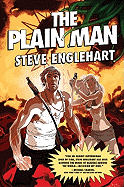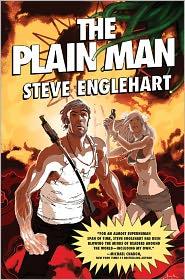

The Plain Man picks up the story of Max's battle against a right-wing cabal called the FRC in the summer of 2009. He's tracked two of its leaders, who are conducting an illicit romance, to a Burning Man-like festival in the Nevada desert, and is determined to turn at least one of them into a double agent. (In an entertaining twist, the two mystical experts he turns to for help on this project are characters Englehart created for comics in the '80s.) A conspiracy with nine co-directors, however, is bound to have competing agendas, and the novel's perspective constantly shifts, following up on hints dropped in The Long Man and adding a few more narrative threads for good measure.
The basic setup is easy enough to keep track of, however, especially with precise timestamps for each scene--in both the Western calendar and the Mayan version, which is the foundation for Max's modified system of astrology that draws upon 260 asteroids in addition to the usual planets. There's a lot of occult information for readers to absorb, and every once in a while that leads to an excess of exposition-through-dialogue. To counter that problem, Englehart never takes his hand off the throttle, essentially turning Max's war with the FRC into the mystical equivalent of James Bond vs. SMERSH, complete with a plot to set off a nuclear bomb in the Yucca Mountains. And, sure enough, Englehart's ending sets things up for the next sequel, already on the boards as The Arena Man. Presumably, that's not the one where Max will confront the doomsday prophecies of December 2012, but with any luck that story isn't too far off.--Ron Hogan
Shelf Talker: Englehart created Max August long before Dan Brown started writing about Robert Langdon, and his version of the occult thriller has much more verve--plus a willingness to go beyond theory with genuine supernatural action.

